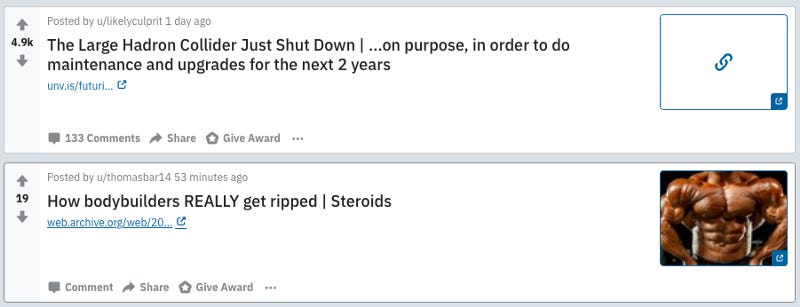Drive insane web traffic with one simple hack!
And it isn’t a clickbait headline

And it isn’t a clickbait headline
If you didn’t pass over this article with disgust for the headline, either you are a keen reader of subheadings, or sadly, clickbait still works.
Clickbait headlines are a dominant feature in many businesses content strategy. As content marketing continues to rise in popularity, the need to push out content dominates marketing discussions. The simple truth is that clickbait works if your marketing goals end at bringing people to a page. But in the same way that getting a like on a Facebook post feels good, that shot of adrenaline from the engagement doesn’t translate to sales. Clickbait may bring people to your page, but how are they feeling about your brand when they leave?
The biggest problem with clickbait headlines is they promise to deliver on something and then, more often than not, fail to deliver. In fact, there is an entire subreddit called /r/savedyouaclick, dedicated to helping you avoid reading through a clickbait article.
This subreddit is littered with clickbait headlines and a short summary of what was actually discussed. As you can see in the examples below, the story is much less exciting than the headline.

Clickbait headlines and what the story tells, from reddit.com
There are really two major problems with clickbait headlines. One is that they often result in high bounce rates because people aren’t getting what they came for and two, it doesn’t inspire people to come back. And this is a problem when you are trying to sell products and services.
When you are running a business with the intention of longevity, you need to not just bring people to you, they need to enjoy their time and want to come back.
If your business model is built on just bringing people to your site for advertising, you may find some success in clickbait. Content publishers need eyeballs and the advertising model is an unfortunate part of the internet ecosystem. But, even if the goal is to only drive traffic to your site, you can find more sustainable growth by focusing on something beyond your headline.
So, how do you drive insane traffic without the clickbait? The simple answer is, to deliver on your promise. If your headline is sensational, then your content should be just as sensational.
I know, this isn’t an exciting “growth hack” that will “guarantee massive growth”. And because of that, it doesn’t always inspire your managers when you bring it up to them as your genius strategy for helping grow the business. But time and time again, consistently delivering on your promises is the best marketing strategy you can incorporate into your business.
Your promises aren’t just what your product can do, although that is key. They extend to every facet of your business. How your customer service reps interact with customers, what kind of things you share on social media, the packaging of your product, the way your employees talk about where they work. All of these pieces are what make up your brand promise and consistent delivery on that promise is how you build a business that can stand the test of time.
In fact, the more consistent you deliver, the more likely your company can withstand a pivot. And in a world where markets and tastes seem to change daily, this is key to success over the long term. Because you’ve built up a level of trust, when the market changes, you can change too, without alienating your base.
Great marketing is not just about ramping up your visitor count, it’s about bringing in the right type of people. Ten thousand users a month with a thirty percent close rate is just as good as a hundred thousand users a month and a three percent close rate. The only difference is, your bounce rates, time on page, and exit rates will be better in the former and Google likes that.
When it comes to your content, there are two huge benefits of delivering on your promises. People are more likely to share content that is great and search engines are more likely to put great content at the top of their lists. Even though the Google algorithm may be unknown, there is something that we do know about why it functions the way it does. Google and other search engines want people to like what they recommend. The reason you go to Google instead of Bing is that you are more likely to find what you are looking for in the first three results of your search.
Everyone wants to go viral, but going viral only proves sustainable when you can deliver after the sensation dies down. And it will die down. No matter how great your viral moment was, you never know if you’ll be able to produce it again, and if everyone that checks out your business feels shafted after the experience, they're not going to come back.
If you are reading this saying, “but I need the traffic now!”, I hear you. The trouble with marketing lies in the need for short-term success without compromising the long-term. Because if you don’t have the short-term success, your business won’t be around for the long-term. But I’m not talking about years to start seeing the payoff of delivering on your promises, it can start happening in just a few months. And although the exciting part of growth comes at the end of the hockey stick curve, the shaft is what actually supports it.
Hopefully, this article was more useful than the headline was sensational and delivered on the promise of explaining one simple “hack” to grow your business. Good luck out there!

